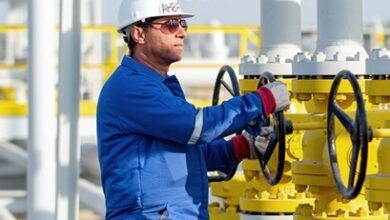Plenary panelists call for simplification in drilling, completions
Estimates for the past three years show approximately US$20-25 billion in project cost overruns; 200-300 million bbl of oil equivalent due to delays in first oil/gas; US$40-60 billion in stock market value loss; and $120-400 billion in non-technical challenges. These numbers show “the consequences of not getting it right,” he said, and the last one – non-technical challenges – may be the most difficult aspect.
The industry has a good handle on technical challenges such as subsurface complexity, harsh environments and equipment integrity. The non-technical challenges, however, are outweighing the technical. They include regulatory, political, fiscal, reputation, environmental/social, security, people, market costs/oil-gas price, supply chain and nature. These challenges are often qualitative and difficult to manage, he pointed out.
When asked whether innovation and technology can address non-technical risks, 61% of the plenary session audience said yes. However, more than half (51%) said the industry does not have a process in place to manage non-technical risks.
Gregers Kudsk, vice president – engineering and projects for Maersk Contractors, tackled the topic by looking at rigs and rig equipment. On the surface, most industry equipment appears to have remained unchanged in the last 30 years. But take a closer look, he urged, and you’ll see big changes in equipment sizes/capacities, primary functions, power (DC to AC) and controls (real-time information are putting drillers in control to monitor their own drilling/performance).
Mechanized rigs are becoming more and more common, he said, even required in some areas of the world. And compared with traditional technology, new technologies can save 20% or more in drilling time. He points out that because only about 30% of total drilling time is spent drilling and tripping, with the remaining 70% being flat time, the real gains will be made by addressing that flat part of the curve.
Mark Puckett, president of Chevron Energy Technology Company, urged the industry to simplify through innovation. Risks should be moved from subsurface to the surface, reliability needs to be improved, the full-cycle field development needs to be considered, and capital productivity needs to get better. He cited completions as an example where complexities must be removed from the process.
In an audience poll of who they believe will lead the industry’s innovation challenge, 39% said joint industry projects, 37% said service companies, 22% said operators, and 1% chose university/government laboratories. When asked about barriers to simplification via innovation, the top two answers were risk tolerance (42%) and unclear value proposition (37%).
Derek Mathieson, president and CEO of WellDynamics, commented that the completions industry appears to be finally catching up to the drilling industry. Completions designs now have surface control capabilities and expanded missions. A state-of-the-art completion may be “maximum reservoir contact quad-lateral, cased mother bore, open-hole laterals” that combine WellDynamics’ SmartWell flow technology, swellable elastomers, ICDs and other technologies.
Solutions in completions demand reliability and a holistic approach to design. He added that reliability modeling is a useful tool to understanding completions design options, and by understanding components, completions systems can be evaluated.
In the future, Mr Mathieson said, the industry can expect to see simplified power and communications architecture in completion designs, with closer ties to drilling and well construction. Equipment will be installed deeper in the well, farther away from the mother bore. There will be greater adaptability of completions as a function of time, with reconfigurable and retro-fittable technology. Integration with chemical technology also will increase, with on-line stimulation, scale and corrosion management. Finally, to manage all of the above, a variety of sensors will be available closer and closer to the reservoir, enabling real-time decisions.




